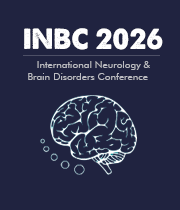Peripheral Nervous System
The peripheral nervous system (PNS) consists of millions of nerves and ganglia which are responsible for regulating and controlling various physical functions of the body. It is composed of both sensory and motor nerves, and plays an important role in connecting the central nervous system (CNS) to other parts of the body. The function of the PNS is to receive and transmit information from and to the CNS. This is accomplished by the coordination of motor nerves and sensory nerves. The motor nerves transmit signals from the brain and spinal cord to the voluntary muscles of the body. The more involuntary muscles, which control reflexive movements, are regulated by the autonomic nerves. The sensory nerves are responsible for sending signals from sensory organs and structures to the brain and spinal cord, providing the CNS with information about the environment and the body’s internal environment. The PNS is divided into two further subdivisions - the somatic nervous system and the autonomic nervous system. The somatic nervous system is responsible for regulating the voluntary movements of muscles, as well as responding to sensory stimuli from the environment. The autonomic nervous system regulates functions that are maintained more automatically such as heart rate, breathing, perspiration, digestion, and other bodily functions. The pathways of messages from both the somatic and autonomic nervous system follow the same structure; from the peripheral nerves into the spinal cord or brain. The signals are then processed, and a response is generated by the CNS, which is then sent to the muscles and organs via efferent pathways. This complex system allows us to interact with the environment and respond effectively to stimuli. The PNS plays a vital role in our everyday activities, allowing us to interact with and respond to our environment while maintaining a stable physiological balance. The study of the PNS can provide us with information about how the nervous system works and can potentially lead to the development of new treatments for certain neurological and psychiatric disorders.

Joe Sam Robinson
Mercer University, United States
Robert B Slocum
University of Kentucky HealthCare, United States
George Diaz
Memorial Healthcare Systems, United States
Daniel Curry
Texas Children’s Hospital, United States
Zhenhuan Liu
Guangzhou University Chinese Medicine, China
Kiran Ghotra
Lake Erie College of Osteopathic Medicine, United States




Title : Atypical presentation of Juvenile myoclonic epilepsy in a 16-year-old female: A Case Report
George Diaz, Memorial Healthcare Systems, United States
Title : Narrative medicine: A communication therapy for the communication disorder of Functional Seizures (FS) [also known as Psychogenic Non-Epileptic Seizures (PNES)]
Robert B Slocum, University of Kentucky HealthCare, United States
Title : Nanoparticles passing the blood brain barrier to treat cancer, infection, and more
Thomas J Webster, Brown University, United States
Title : Managing healthcare transformation towards personalized, preventive, predictive, participative precision medicine ecosystems
Bernd Blobel, University of Regensburg, Germany
Title : Transcranial painless neurorehabilitation scalp acupuncture electrical stimulation for neuroregulation of autism spectrum disorder
Zhenhuan Liu, Guangzhou University Chinese Medicine, China
Title : The million-dollar workup
Zoe Reinus, University of Connecticut, United States